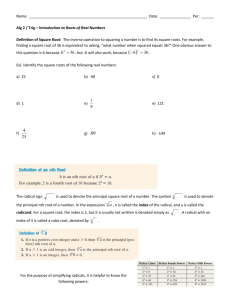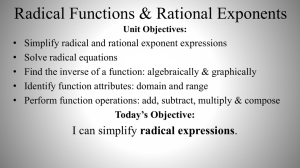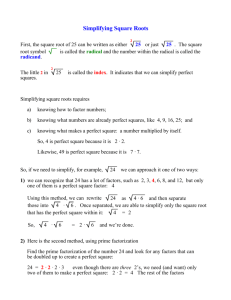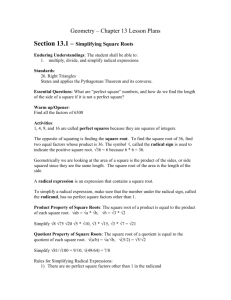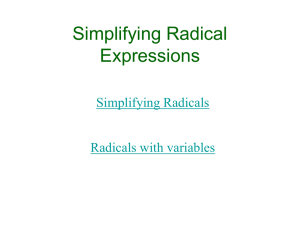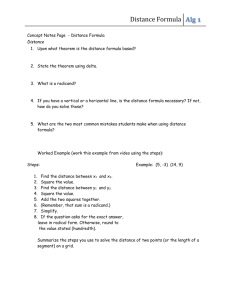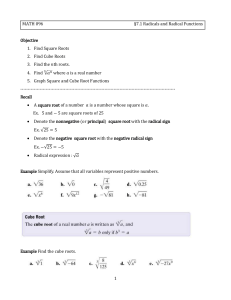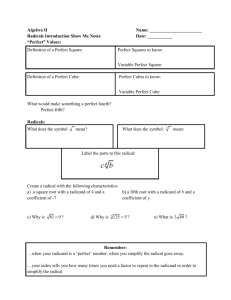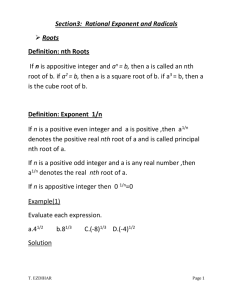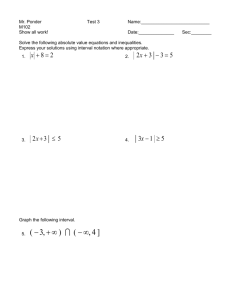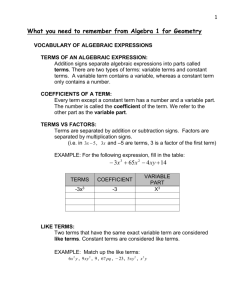Radical Expressions & Rational Exponents Worksheet
advertisement
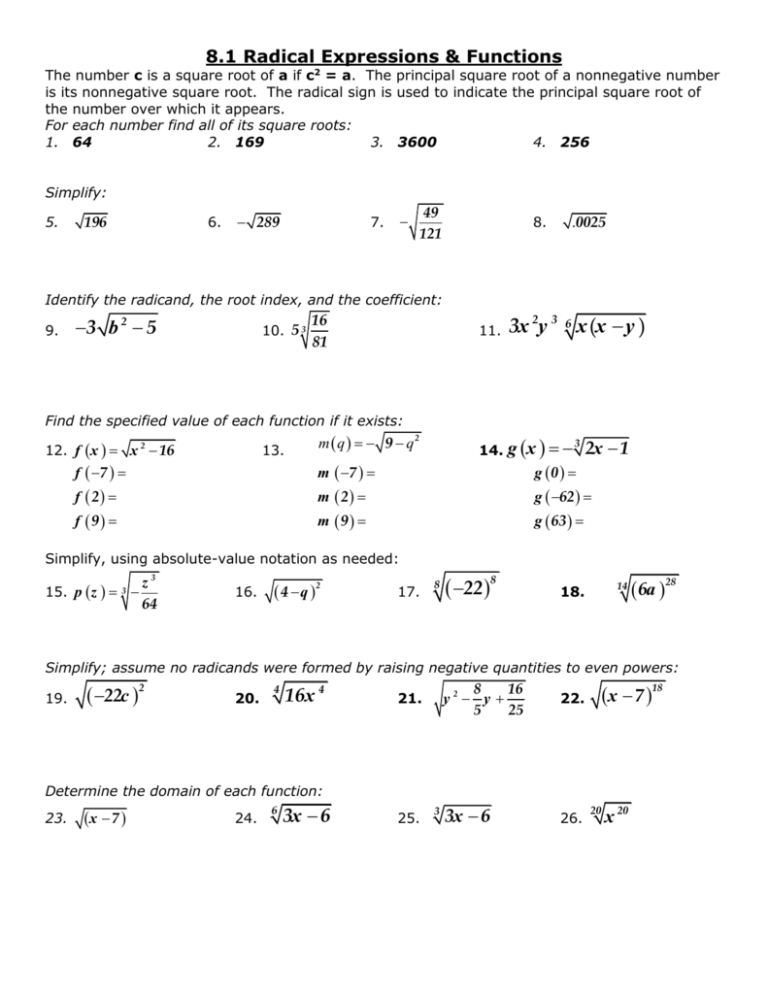
8.1 Radical Expressions & Functions The number c is a square root of a if c2 = a. The principal square root of a nonnegative number is its nonnegative square root. The radical sign is used to indicate the principal square root of the number over which it appears. For each number find all of its square roots: 1. 64 2. 169 3. 3600 4. 256 Simplify: 5. 196 6. 289 7. 49 121 8. .0025 Identify the radicand, the root index, and the coefficient: 9. 3 b 2 5 10. 5 3 16 81 11. 3x 2y 3 6 x (x y ) Find the specified value of each function if it exists: 12. f x x 2 16 13. m q 9 q2 14. g x 3 2x 1 f 7 m 7 g 0 f 2 m 2 g 62 f 9 m 9 g 63 Simplify, using absolute-value notation as needed: 15. p z 3 z3 64 16. 4 q 2 17. 8 228 14 18. 6a 28 Simplify; assume no radicands were formed by raising negative quantities to even powers: 19. 22c 2 20. 4 16x 4 21. 8 16 y2 y 5 25 22. 3x 6 26. x 7 18 Determine the domain of each function: 23. x 7 24. 6 3x 6 25. 3 20 x 20 8.2: Rational Exponents n If bn = a, then b is an nth root of a and b = a1/n = , where a is called the radicand and n is called the root index. If n is a positive even integer and a is a positive real number, then a1/n is the positive real nth root of a and is called the principal root. If n is a positive odd integer and a is any real number, then a1/n is the real nth root of a. If m and n are positive integers, then am/n = (a1/n)m = (am)1/n, provided that a1/n is defined. . If m and n are positive integers, then a -m/n = m1/ n , provided that a1/n is defined and nonzero. It is necessary to use absolute value a when taking even roots of variables to indicate the principal root. Product rule: n ab n a n b . a Quotient rule: n a b n n a . A radical is simplified if it has (1) no perfect nth powers as factors of b the radicand (meaning no powers inside the radicand are larger than the root index), (2) no fractions inside the radical, and (3) no radicals in the denominator. Convert from radical to exponential or from exponential to radical form: 3 1. 3 27 2. 3. 4. -71/2 5. x-2/5 a3 w 27 Simplify (assume all variables represent non-negative real numbers) 6. 11. 7. 64 1 8 16. (w ) 1 8. 1691/2 9. -161/4 13. 14. 10. (-16)1/4 3 9 1/3 21. b 36 12. (-27)1/3 243 17. 32 (a1/2b-1/3)4/3(a5b) -3 5 36m 18. (16a8b4)1/4 22. 15. 242 19. 9-191/2 (9x8y-10z12)1/2 3 48 20. 32/392/3 23. 3 81a 1000 144a 18 y 8 24. 96a 8b 7 c 6 26. 3 96a 8b 7 c 6 4 96a 8b 7 c 6 1 2 32x 25. 64x 10 -6 y -15 y z 9 z 5 3 5 2 -12 - 3 =
